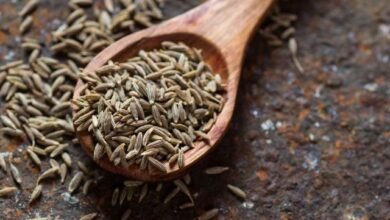Sugar vs. Fat – Navigating the Nutritional Maze for Optimal Health and Waistline Management
Introduction – Unraveling the Dietary Dilemma
The battle between sugar and fat has been a longstanding debate in the realm of nutrition. As we strive for healthier lifestyles and more mindful eating, understanding the impact of these two elements on our health and waistlines becomes paramount. Join us on a journey to unravel the complexities of sugar and fat to make informed choices for your well-being.
Sugar Spotlight – The Sweet Temptation
Sugar, the ever-present sweetener in our diets, has long been scrutinized for its potential negative effects on health. Found in a variety of foods, from desserts to seemingly innocent snacks, sugar can contribute to excess calorie intake, leading to weight gain. Moreover, high sugar consumption has been linked to an increased risk of chronic conditions such as type 2 diabetes and cardiovascular disease.
Understanding Sugar – Beyond the Sweet Taste

The Glycemic Rollercoaster – Sugar’s Impact on Blood Sugar Levels
One of the key concerns with excessive sugar intake is its rapid effect on blood sugar levels. When we consume sugary foods, our blood glucose levels spike, triggering a surge in insulin production. The subsequent crash in blood sugar levels can leave us feeling fatigued and craving more sugary treats, perpetuating a cycle of highs and lows that may contribute to overeating and weight gain.
The Hidden Culprit – Added Sugars in Processed Foods
Unbeknownst to many, added sugars lurk in a multitude of processed foods, including seemingly healthy options like yogurt and granola bars. These hidden sugars not only contribute to weight gain but also pose a risk to overall health. Learning to identify and limit added sugars is crucial for those seeking to make informed dietary choices.
The Fat Conundrum – Friend or Foe?

Demystifying Dietary Fat – Types and Functions
Unlike sugar, dietary fat is a more complex nutrient, with various types each playing a distinct role in the body. Unsaturated fats, found in avocados and olive oil, are considered heart-healthy and can contribute to overall well-being. On the other hand, saturated fats, often found in animal products, may raise cholesterol levels and increase the risk of heart disease. Navigating this nuanced landscape requires a discerning approach to fat consumption.
The Caloric Density Dilemma – Fat’s Impact on Weight Management
While fat is often associated with weight gain, it’s crucial to understand that not all fats are created equal. The caloric density of fat is higher than that of carbohydrates and protein, meaning a small amount of fat can contribute a significant number of calories. However, incorporating healthy fats into a balanced diet can promote satiety and help control overall calorie intake.
The Battlefront – Sugar and Fat in Processed Foods
The Perfect Storm – High Sugar, High Fat Combos
Processed foods, often laden with both sugar and unhealthy fats, present a double whammy for our health and waistlines. From sugary snacks to fried delights, these foods can lead to excessive calorie intake and contribute to the development of obesity and related health issues. Understanding food labels and making informed choices is key to avoiding the pitfalls of this dietary minefield.
Sugar and Fat Addiction – Unraveling the Neurological Web
Research suggests that both sugar and fat can activate reward centers in the brain, leading to cravings and potential addiction-like behaviors. The combination of sugar and fat, prevalent in many processed foods, may create a potent neurological reward that makes these items challenging to resist. Recognizing and addressing these addictive tendencies is crucial for breaking unhealthy eating patterns.
The Rabbit Pose, also known as Sasangasana, is an excellent yoga pose for individuals over the age of 50 aiming to enhance spinal mobility and alleviate stiffness. In this guide, we’ll explore step-by-step instructions on how to perform the Rabbit Pose and reap its benefits for a healthier spine.
The Balanced Approach – Crafting a Healthier Plate
Striking a Nutritional Harmony – The Role of Whole Foods
A balanced approach to nutrition involves emphasizing whole, nutrient-dense foods. Incorporating a variety of fruits, vegetables, lean proteins, and whole grains can provide essential nutrients without the excess sugars and unhealthy fats found in processed alternatives. This approach not only supports weight management but also contributes to overall health and well-being.
Moderation Matters – Enjoying Both Sugar and Fat Responsibly
Rather than vilifying either sugar or fat, a more nuanced perspective involves moderation and mindful consumption. Enjoying occasional treats that contain sugar or indulging in foods with healthy fats can be part of a balanced diet. The key is to maintain awareness of portion sizes and overall dietary patterns.
Conclusion – The Symphony of Nutrition
In the ongoing debate of sugar vs. fat, the key lies in balance and informed decision-making. Both sugar and fat play essential roles in our diets, but their overconsumption, especially in the form of processed foods, can lead to health issues and weight gain. By understanding the nuances of each and crafting a balanced plate filled with whole, nourishing foods, we can navigate the nutritional maze to promote optimal health and manage our waistlines effectively. The symphony of nutrition awaits those who approach their plates with mindfulness and a commitment to well-being.






